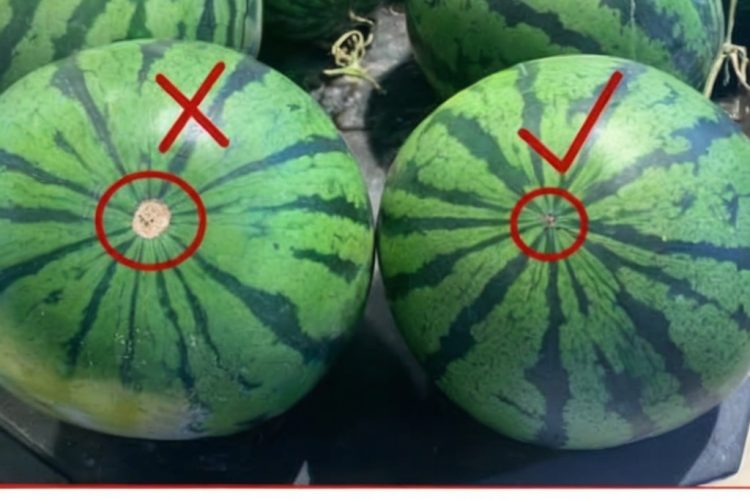How to Pick the Perfect Watermelon Every Time: 6 Easy Tips for Sweet, Juicy Results
There's nothing like biting into a sweet, juicy watermelon on a warm day—refreshing, crisp, and naturally delicious. But picking that perfect watermelon can sometimes feel like pure luck. Thankfully, there are tried-and-true methods to spot a ripe watermelon every single time, ensuring your next pick is bursting with flavor, vibrant red flesh, and just the right texture.
Here are six foolproof tips to help you master the art of choosing the perfect watermelon:
1. Check the Field Spot (Your Sweetness Indicator)
When inspecting a watermelon, look for a large, creamy-yellow spot—this is the field spot, indicating where the watermelon rested on the ground.
- What to look for: Creamy-yellow (not white or green).
- Why it matters: A well-developed field spot means the watermelon ripened longer on the vine, developing more natural sugars for maximum sweetness.
- Pro tip: Avoid watermelons with overly large or white field spots, as they might be underripe or lacking sweetness.
2. Assess the Color and Appearance
A ripe watermelon has a deep, consistent green color with distinct, contrasting stripes.
- Ideal characteristics: Dark green rind with clear, contrasting stripes or markings.
- Avoid: Melons with pale, faded, or irregular colors, indicating uneven ripening.
- Extra note: Some specialty or heirloom watermelons may naturally have lighter rinds—check your variety first.
3. Feel the Weight: Heavier is Sweeter
Always pick up the watermelon—it should feel heavy for its size.
- Why weight matters: Watermelons are mostly water. A heavier melon means higher water content, resulting in juicier flesh.
- Tip: Compare two similar-sized melons, choosing the heavier one for better flavor and juiciness.
4. Perform the "Tap Test"
Gently knock on the watermelon’s rind with your knuckles and listen closely:
- Good sign: A ripe melon produces a hollow, deep sound, like a drumbeat.
- Bad sign: A dull, muffled, or high-pitched sound usually indicates an underripe or mealy melon.
- Science behind it: The hollow sound comes from internal air pockets formed as the melon ripens.
5. Examine Rind Thickness and Firmness
A ripe watermelon typically has a firm, smooth rind that isn’t overly thick.
- What to look for: Thin, firm rind with slight give under your fingertips.
- Why it matters: A thin rind usually means more edible, juicy fruit inside, and optimal ripeness without toughness.
- Avoid: Melons with a rock-hard, thick rind or soft, squishy spots, indicating overripeness or potential spoilage.
6. Inspect for Imperfections and Shape
Look over the melon thoroughly, checking its overall appearance and shape:
- Ideal characteristics: Symmetrical, smooth, and uniform without dents, cuts, cracks, or bruising.
- Avoid: Watermelons with blemishes, bruised patches, mold, or irregular growth patterns, as these can negatively affect texture and flavor.
- Bonus tip: Choose a melon with a slight sheen—overly dull skins may hint at underripeness.
Bonus Farmers’ Market Tip: The Tendril Test
If you're lucky enough to choose from freshly picked melons:
- Check the small tendril (stem) where the melon was attached to the vine.
- Good sign: Brown, dried-out tendril signals ripe melon.
- Bad sign: Green tendril suggests early harvesting and less sweetness.
Quick Reference Checklist:
- ✅ Creamy-yellow field spot.
- ✅ Dark, contrasting green color.
- ✅ Feels heavy for its size.
- ✅ Hollow sound when tapped.
- ✅ Thin, firm, and smooth rind.
- ✅ No blemishes, bruises, or cracks.
- ✅ Dry, brown tendril (if vine-ripened).
Common Mistakes to Avoid:
- Size doesn't guarantee sweetness: Smaller melons often pack concentrated flavors.
- Avoid refrigerated melons before cutting: Cold can diminish flavor, so store at room temperature.

Ingredients
Method
- Check the watermelon’s field spot, ensuring it’s a creamy yellow.
- Inspect for a consistent, dark green rind with contrasting stripes.
- Lift the melon—it should feel heavier than it looks.
- Tap gently and listen for a deep, hollow sound.
- Feel the rind—it should be firm but not overly thick or hard.
- Confirm there are no blemishes, cracks, or soft spots.
- (Optional) At a farmers’ market, check if the stem tendril is brown and dry.
Notes
- Store at room temperature before cutting to preserve sweetness.
With these expert tips, choosing the perfect watermelon no longer feels like a guessing game. Now you can confidently select sweet, juicy, and delicious watermelons every single time, enjoying one of summer’s simplest and healthiest pleasures.
